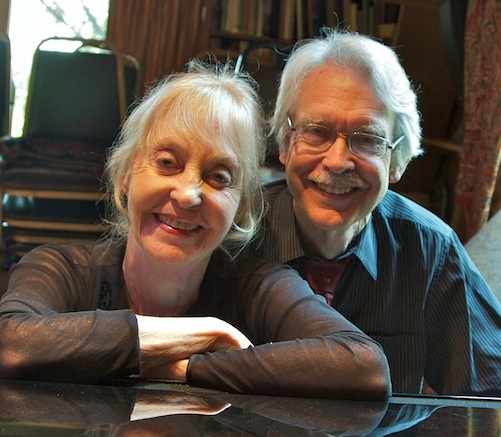TWENTY-NINTH SEASON
Harvest
patience, risk, abundance, variety
August 25 ‐ September 2, 2018
Introduction
 The Token Creek Festival takes place at the very end of summer ‐ or is it the beginning of fall? ‐ that last weekend before Labor Day, when the hot days are mostly over, but the long dusk is still there, and most of us are reluctant to begin thinking in terms of jackets and sweaters, with their air of responsibility.
The Token Creek Festival takes place at the very end of summer ‐ or is it the beginning of fall? ‐ that last weekend before Labor Day, when the hot days are mostly over, but the long dusk is still there, and most of us are reluctant to begin thinking in terms of jackets and sweaters, with their air of responsibility.
For those of us lucky enough to be able to step away from traffic and noise, we notice that the fields begin to hang and droop, the ground is disordered and cluttered, nature is at its most productive, laden, offering up its experience. In recent years at our Festival guests have noticed an ever more varied and opulent garden: the kind of result only available to an author, a gardener who brings passion, adventure, tenacity to the adventure. The observer notices its relationship to the elements of the festival, risk, patience, experimentation, disappointment, and finally amazement that a piece of ground is capable of such nourishment and variety.
Musicians also cultivate a garden, with a similar level of unpredictability and surprise. There is always the hope of reducing the variables, but they persist, and the richness of choice, the endlessness of the resources we inherit and try to continue to create drives us to try again.
Harvest. The Token Creek Festival has never been a Summer Festival, that is, it has never taken care to play a quotient of carefree sunlit pieces which summer festivals crave (such pieces appear but seldom as centerpieces). It is an end-of-summer festival, a Harvest of music that the Directors, already in their lives’ autumn when they began the venture almost thirty years ago, wished to keep, together with some things being seeded for the first time.
Three persistent strands will again be woven in this summer, and it is worth examining why. Bach Cantatas, Haydn Trios, Schubert-Schumann songs for voice and piano. All were originally involved with very specialized players and a highly motivated circle of listeners. They were never, at composition, aimed at ‐ nor have they ever achieved ‐ large audiences. Far from an elitist declaration, this is a statement about community, gathering together as a source of enlightenment, support, celebration and solace.
Think first about the Himmelsburg (Heaven’s Castle), the tiny upper story performance space for cantata performances in Bach’s Weimar. There was space for 14 player chairs, 3 keyboard instruments, 6 extra chairs, and space for the listeners (up to about 30) to surround the performers. In this (no longer existent) magical space (judging by the music JSB wrote for it) such early cantatas as BWV165 and 199, recently offered at Token Creek, some of the composer’s most touching and mysterious music, found their perfect scale.
We also like to think about the Haydn Trios, the composer’s most wayward and spontaneous music, each one a glimpse into the improvisational world of a composer who described his compositional method ‐ sitting at the piano and improvising. Why are the pieces often so lacking in specific playing instructions? Because they began their performance life right in the composer’s studio, with him playing, supervising, describing. Part of the challenge is to retrace those steps, best as we can, without his presence.
Then there are the wonderful graphic renderings of concerts of the Schubert circle, some of the best by Adolph Menzel, a few generations after Schubert, the enthusiastic friends crowding toward the performers, the shy composer half hidden from the viewer. That audience’s conviction about Schubert’s music, in spite of its not yet presence in the big-time concert world, their stake in its value, is one of the main reasons we have it today. But the music is still most at home in a small room, or a home, or simply in the heart of a single receiver for whom it seems meant, who can surround it with the serious silence it needs.
These are some of the Harvests we continue to welcome each near-Fall before the cold weather takes over again.

John and Rose Mary Harbison
Artistic Directors